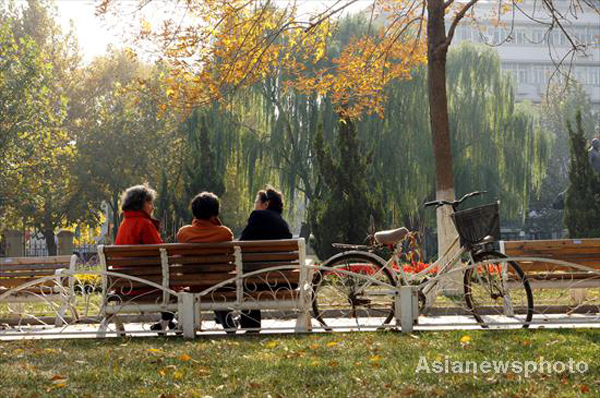 |
|
Three retired women chat in a park in Tianjin, Nov 4, 2010.[Photo/Agencies] |
Nowhere is the rapid aging of Japan more visible than in rural towns such as Kamikatsu, where 51 percent of local residents are over the age of 65.
During a trip to the mountainous town in Tokushima prefecture on Shikoku Island, I found that the town has mobilized its elderly population to work as a way to keep them healthy and away from hospitals.
Japan, where the labor force participation rates for older people are among the highest in the industrialized world, is eager to improve labor market opportunities for the older population.
For Japan, keeping old people in the workplace is a way to address its fast aging population and shrinking workforce.
A recent survey by the Health and Labor Ministry found that of 150,000 companies with at least 31 employees more than 20 percent of them are open to employing septuagenarians, a record high since 2009 when the number was 16.3 percent. About 3 percent of these businesses do not have a mandatory retirement age at all.
Japan hiked its mandatory retirement age, defined as the minimum age for receiving social security pensions, to 61 in 2013 and it is raising it incrementally at the rate of one year every three years to 65 in 2025.
The population is graying worldwide, but the World Bank warned in a report that East Asia is aging faster than other areas.
Japan leads the trend with the world's longest life expectancy and one of the lowest birthrates. According to the Japanese government, the percentage of those 65 or older among Japan's working population reached 10.6 percent in 2014, up from 4.9 percent in 1980. More than a quarter of Japan's population is 65 or older today.
The authors of the World Bank's report released on Wednesday estimate that unless reforms are implemented, the working-age population in Japan will decline by 10 percent by 2040.
Japan's administrative reform minister Taro Kono recommended in an interview with Reuters on Thursday that his country craft an "integrated" immigration policy to cope with its shrinking population, or risk losing out to an also ageing China in competition for vital foreign workers.
A forecast by the Japanese government expects Japan's population, which stood at 127 million in 2013, to more than halve to 52 million in 2100 if the current low birth rate continues.
Recent surveys reflect the grim reality. A survey by Japan's Recruit Marketing Partners Inc. shows that 42 percent of unmarried men in their 20s have never had a girlfriend, while the same is true of nearly 30 percent of men aged from 20 to 69.
China, home to 130 million people over 65, is also graying quickly. World Bank data show that China's birth rate stood at 1.66 births per woman in 2012, compared with 1.9 in the United Kingdom and 1.88 in the US.
China has relaxed its family planning policy so all couples can have two children. However, there are indications that many couples are unwilling to have another child.
The super-aged Japan should offer China some food for thought. Working longer is one way to improve the retirement security of today's older workers and it also contributes to economic growth, while allowing the nation to benefit from the knowledge and skills of older workers.
The author is China Daily chief correspondent in Brussels.
fujing@chinadaily.com.cn

I’ve lived in China for quite a considerable time including my graduate school years, travelled and worked in a few cities and still choose my destination taking into consideration the density of smog or PM2.5 particulate matter in the region.